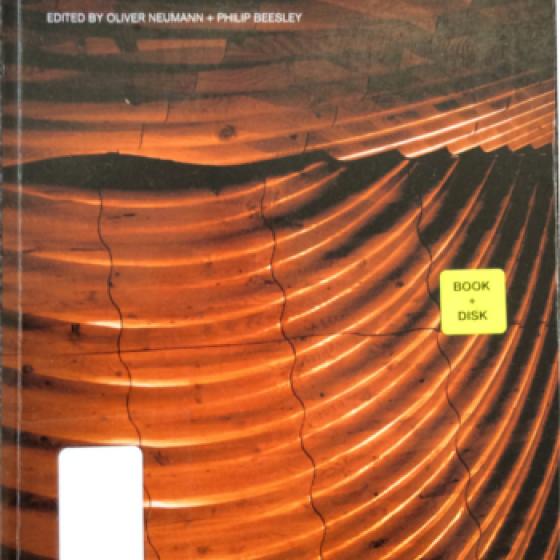Title: FutureWood: Innovation in Building Design + Manufacturing
Editor: Oliver Neumann, Philip Beesley
Photographer/s: Beesley, Philip; Blyt, Christian; Chan, Benny; Claussen, Carl Julius; Clayton, Curt; Faulders, Thom; Friedman, Jonathan; Grandorge, David; Green, M.; Holoduke, Serge; Jakovljevic, Goran; Lemon, Mike; Loewen, Shannon; Menges, Achim; Neumann, Oliver; Randall, Brookes Stacey; Reichert, Steffen; Sandrin, Ana; Schmidt, Daniel; Stacey, Michael; Williamson, Shane.
Photographs courtesy of: Architectura; designtoproduction; fieldoffice; Fotoworks; Hundegger Maschinenbau GmbH; mcFarlaneGreen Architecture + Design Inc.; morphosis; Ply Architecture; StructureCraft Builders Inc.;Suffolk County Council; SYSTEMarchitects.
Art Director: Eric Bury
Design: Jon Cummings
Copy Editing: Monika Szewczyk
Design Production: Todd Macyk, Robin Paxton-Beesley, Charisma Panchapakesan
ISBN: 978-0-9780978-2-0
Size: 172mm by 248mm, 128p
Publisher: Riverside Architectural Press www.riversidearchitecturalpress.com/
Published in: 2007

Divided into two major sections, FutureWood: Innovations in Building Design + Manufacturing examines a selection of new materials and techniques used in the construction of timber structures. From manufactured timber products to digital design projects, the book examines different companies that have been expanding the uses to which timber can be put under the right circumstances.
A fairly small book, there is nonetheless a very large amount of information in FutureWood, with each page balancing large passages of text with photos and diagrams. There is no colour in the book, which might be why the focus is less on photos of the case studies and more on floor-plans and expanded structural diagrams. This lack of colour is a little bit distracting, particularly where the photos are of larger structures with many composite pieces, but the diagrams are perfectly legible and highly informative.
The first section of the book examines engineered wood products, ranging from massive timber products of CLT and glulam to smaller, plywood-based materials. Most of the case studies look at the kinds of products that are used in construction the world over, but some of the inclusions focus on products that have been specifically developed by a single company such as Corelam (65), showcasing how engineered timber can be designed to function in very specific ways for very specific purposes. This section is also very informative when it comes to the manner in which these products are manufactured, showing how they are built and then cut to size in multi-axis CNC mills.
The second section, while still looking at projects that involve timber construction, is more focused on the design side of the equation. All of the inclusions have been partially created through digital design tools, leading to structures that have overly smooth curves, highly sculpted lines and, in one case, a permeable skin that opens and shuts based on the surrounding humidity. These projects showcase the benefits of digital design; each of them could not have been constructed without the aid of digital design tools due to the atypical shapes that make up the structures. One of the best examples of how digital design can create otherwise impossible structures is in the Inventioneering Architecture (118), a sculpted bench that was part of a travelling exhibition. The 1000 timber beams that make up the sculpture are each a unique shape, occupy a specific position in the sculpture and, when they are all assembled, create a beautiful wooden bench that evokes the lines of Swiss mountain ranges.
FutureWood grants a powerful view into the different ways in which digital construction and design technologies can give wood far greater flexibility in the shapes and applications that they can form. While the book deals exclusively with structures that use timber as their primary structural material, the point is made that the techniques applied to these structures could be used on any other material. However, the buildings in FutureWood show the great flexibility that wood has when combined with digital design tools, making a powerful argument for how modern structures and designs are a great match with timber.
